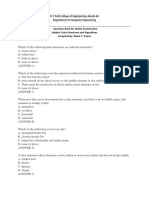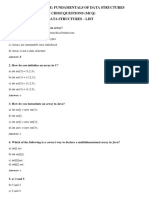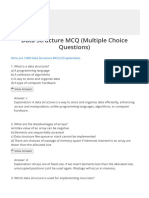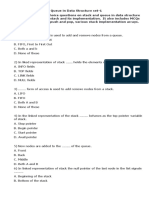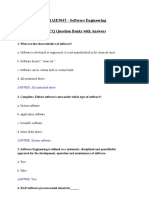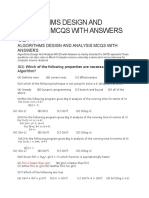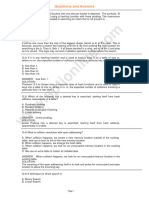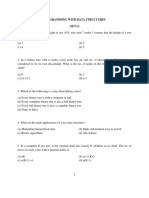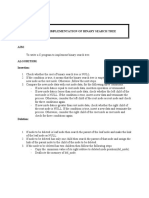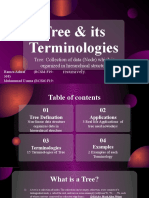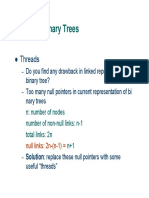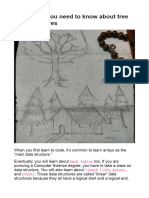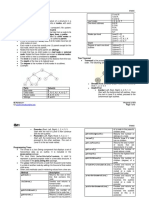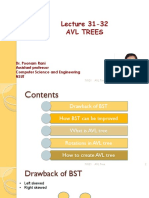0% found this document useful (0 votes)
3K views17 pagesMCQ On Tree Data Structures
The document contains 42 multiple choice questions about binary trees, binary search trees, graphs, and balanced binary search trees like AVL and red-black trees. The questions test concepts like calculating the maximum number of nodes in a binary tree based on its height, properties of full vs. complete binary trees, asymptotic time complexity of operations on binary search trees, traversal orders like pre-order and post-order, and properties required to maintain balance in self-balancing binary search trees.
Uploaded by
Aditya KumarCopyright
© © All Rights Reserved
We take content rights seriously. If you suspect this is your content, claim it here.
Available Formats
Download as DOCX, PDF, TXT or read online on Scribd
0% found this document useful (0 votes)
3K views17 pagesMCQ On Tree Data Structures
The document contains 42 multiple choice questions about binary trees, binary search trees, graphs, and balanced binary search trees like AVL and red-black trees. The questions test concepts like calculating the maximum number of nodes in a binary tree based on its height, properties of full vs. complete binary trees, asymptotic time complexity of operations on binary search trees, traversal orders like pre-order and post-order, and properties required to maintain balance in self-balancing binary search trees.
Uploaded by
Aditya KumarCopyright
© © All Rights Reserved
We take content rights seriously. If you suspect this is your content, claim it here.
Available Formats
Download as DOCX, PDF, TXT or read online on Scribd
/ 17













